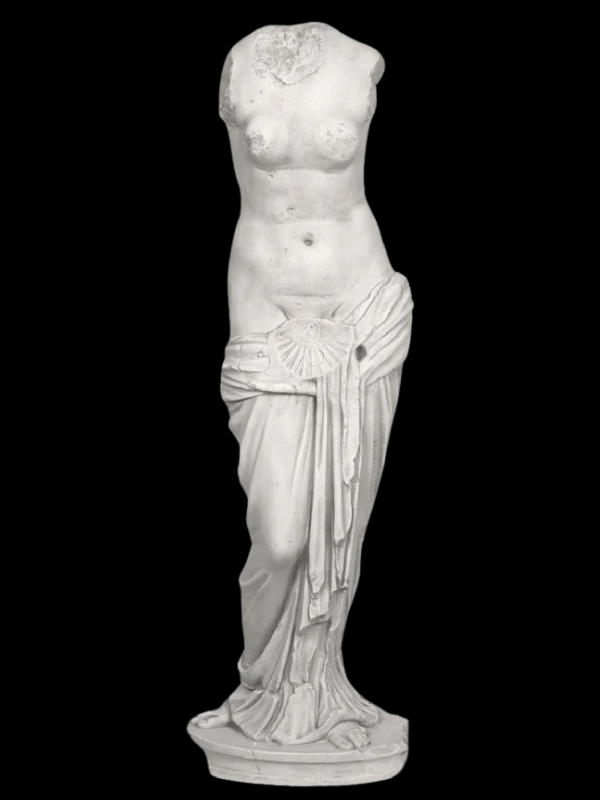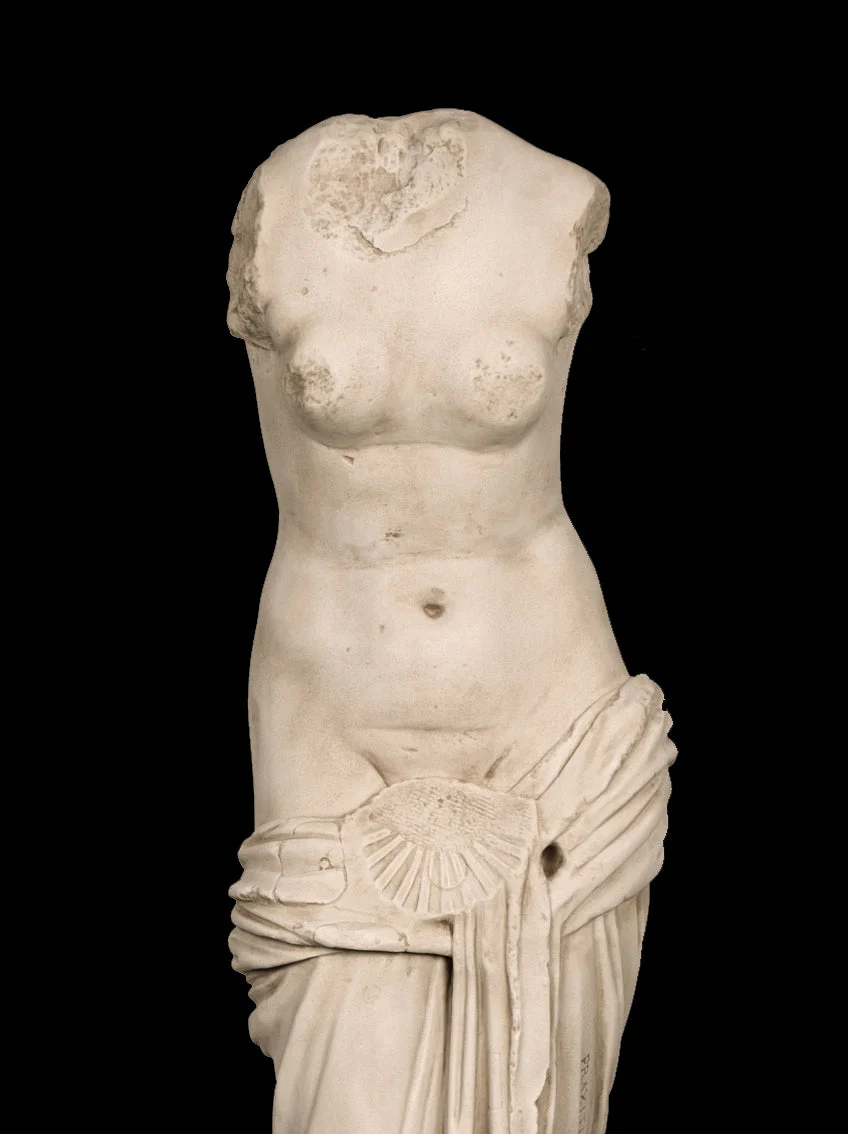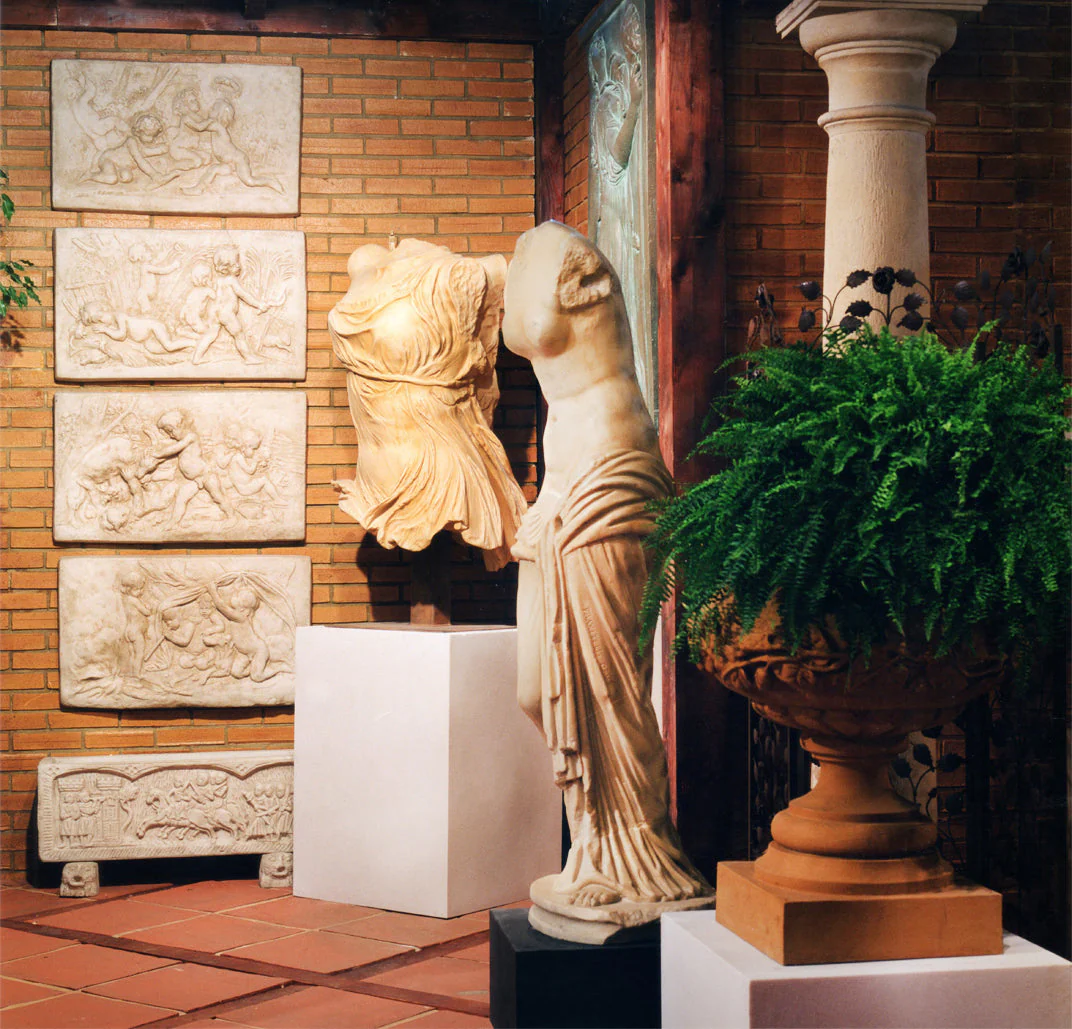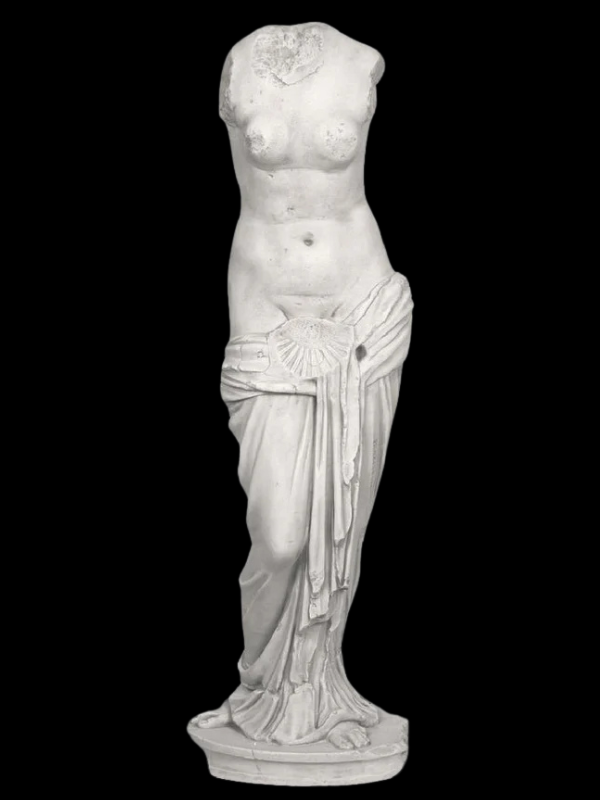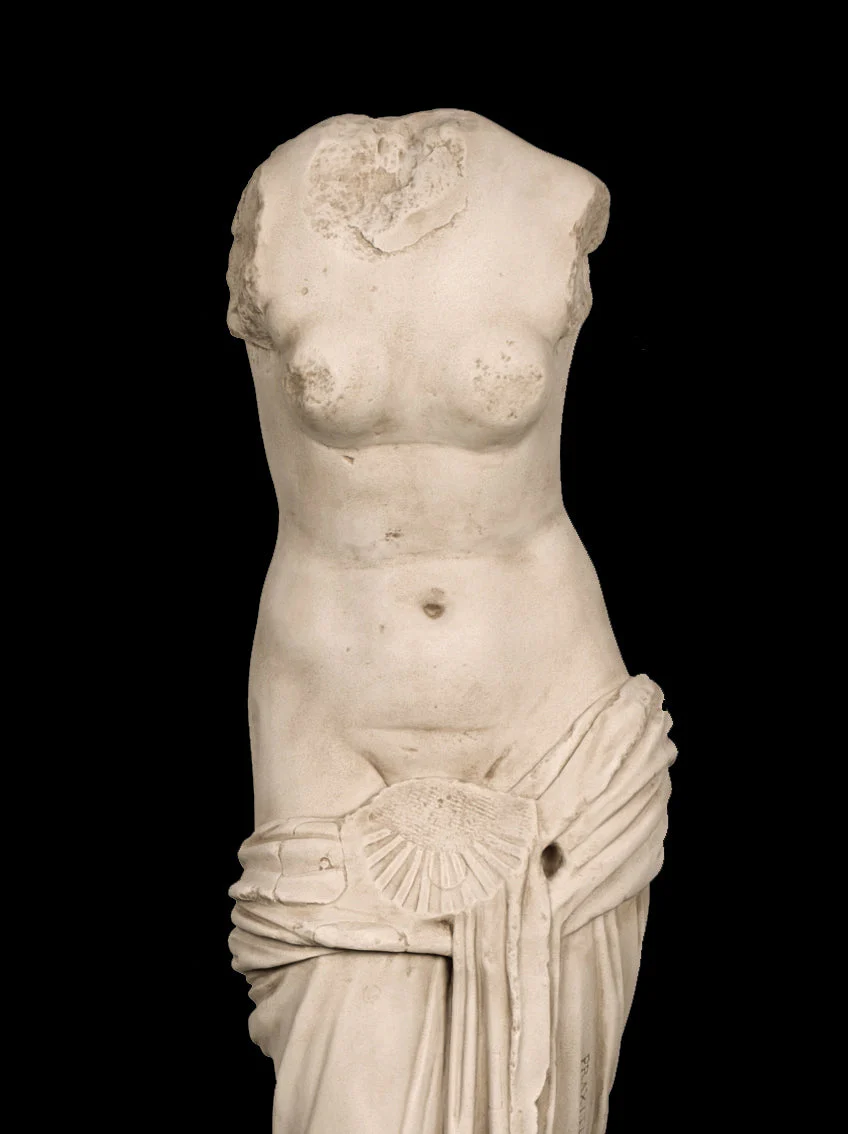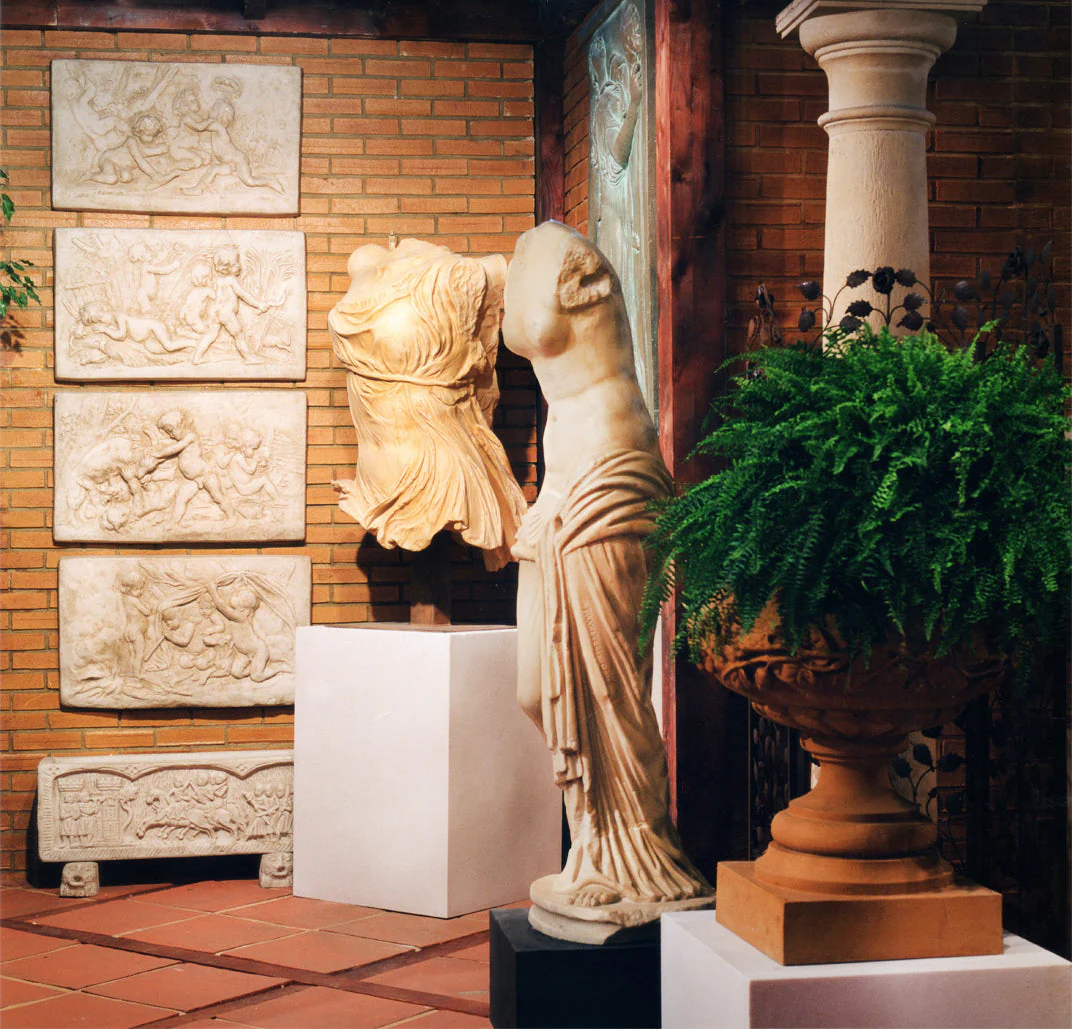Venus Torso Statue
Venus Torso Statue
Our Venus with Shell Torso Life-size Statue, standing at an impressive 160 cm, is a magnificent reproduction of an ancient Roman sculpture that dates back to around 135 A.D. This authentic masterpiece is modeled after the original marble statue currently housed in the prestigious Prado Museum in Madrid, Spain. The original was discovered in the Roman ruins of Sagunto, and it was carefully restored during the Renaissance by the sculptor B. Rovira, who added a shell to the pubic area and inscribed the side of the torso with the name of Praxiteles, a famous Greek sculptor of antiquity.
This stunning statue captures the timeless beauty and allure of Venus, the Roman goddess of love, beauty, and fertility. Her figure, rendered in smooth white marble, represents not only the physical ideals of the time but also the symbolic connection between the human body and divine beauty. Our Venus with Shell Torso statue, available for sale, offers you the opportunity to bring a piece of classical history and mythological wonder into your home or garden. The statue's life-size presence, combined with its historical and artistic significance, makes it an extraordinary addition to any collection of fine art.
Venus in Roman Mythology
Venus, known as Aphrodite in Greek mythology, is one of the most enduring and beloved deities in the pantheon of classical mythology. As the goddess of love, beauty, and desire, Venus was revered for her ability to inspire love and passion in both gods and mortals. Her mythological origins are intertwined with the elements of nature and the cosmos. According to the most famous myth, Venus was born from the sea foam (aphros in Greek) and emerged fully grown from the waves, a scene famously depicted in many works of ancient and Renaissance art, such as Botticelli's The Birth of Venus.
Venus was also a symbol of fertility, often associated with the generative forces of nature, and was linked to the cycle of life and death. Her influence extended beyond romantic love to encompass the creative power of life itself, making her an essential figure in both personal and communal worship in ancient Rome.
The myths surrounding Venus were deeply embedded in the culture and art of ancient Rome, where she was not only seen as a goddess of beauty but also as a protector of gardens, a bringer of good fortune, and even a goddess of victory in battle. Many Roman emperors, including Julius Caesar and Augustus, claimed to be descendants of Venus, further elevating her status as a divine matron of the Roman state.
The Artistic and Historical Significance of the Venus Torso
The Venus with Shell Torso is a remarkable example of ancient Roman sculpture, reflecting both the technical skill and the cultural values of its time. The statue belongs to a long tradition of representations of Venus, which began in ancient Greece with the creation of life-size statues of the goddess, such as Praxiteles’ Aphrodite of Knidos, one of the first full-scale female nudes in classical art. These statues were admired not only for their beauty but also for the way they embodied the human form as an expression of divine grace and perfection.
The original Venus torso was discovered in the ruins of Sagunto, an ancient Roman city in Spain. This particular statue, carved from white marble, dates to around 135 A.D., a period known for its prolific production of classical art and architecture. Roman artists, inspired by the earlier works of Greek masters like Praxiteles, sought to emulate their idealized forms and techniques while infusing them with the unique stylistic preferences of Roman culture.
The statue of Venus, like many others from this period, is characterized by its realistic portrayal of the human body, with an emphasis on smooth, flowing lines and harmonious proportions. The torso is elegantly proportioned, with soft, natural curves that reflect the ancient ideal of feminine beauty. Although the arms and head are missing, the torso itself conveys a sense of both movement and stillness, suggesting that the figure may have been in a gentle, relaxed pose, perhaps with one arm raised as in many other depictions of Venus.
One of the unique features of this particular statue is the Renaissance restoration by B. Rovira. During the Renaissance, many ancient Roman sculptures were rediscovered and restored by artists who sought to preserve and celebrate the classical heritage of antiquity. Rovira, in restoring this Venus torso, added a shell to the pubis—a symbol of Venus’ birth from the sea. This small but significant addition ties the statue more closely to the famous myth of Venus’ birth, where she rises from the ocean on a shell. The inscription of Praxiteles’ name on the side of the statue, though historically inaccurate, was a way for Rovira to connect the work to the revered tradition of Greek sculpture and to pay homage to the artist who first brought Venus to life in marble.
Why Own a Venus with Shell Torso Statue?
Owning a life-size reproduction of the Venus with Shell Torso is an extraordinary opportunity to bring a piece of classical art and history into your home. This statue represents the height of artistic achievement in ancient Rome, as well as the enduring legacy of Venus, the goddess of love and beauty. Whether displayed in a garden, a gallery, or an interior space, the Venus torso exudes elegance and sophistication, serving as a reminder of the timeless ideals of beauty and grace.
In addition to its aesthetic appeal, the Venus with Shell Torso is a powerful symbol of love, desire, and fertility. As a representation of Venus, the statue carries with it the rich mythology of the goddess and her influence over the human heart and spirit. For those who appreciate
